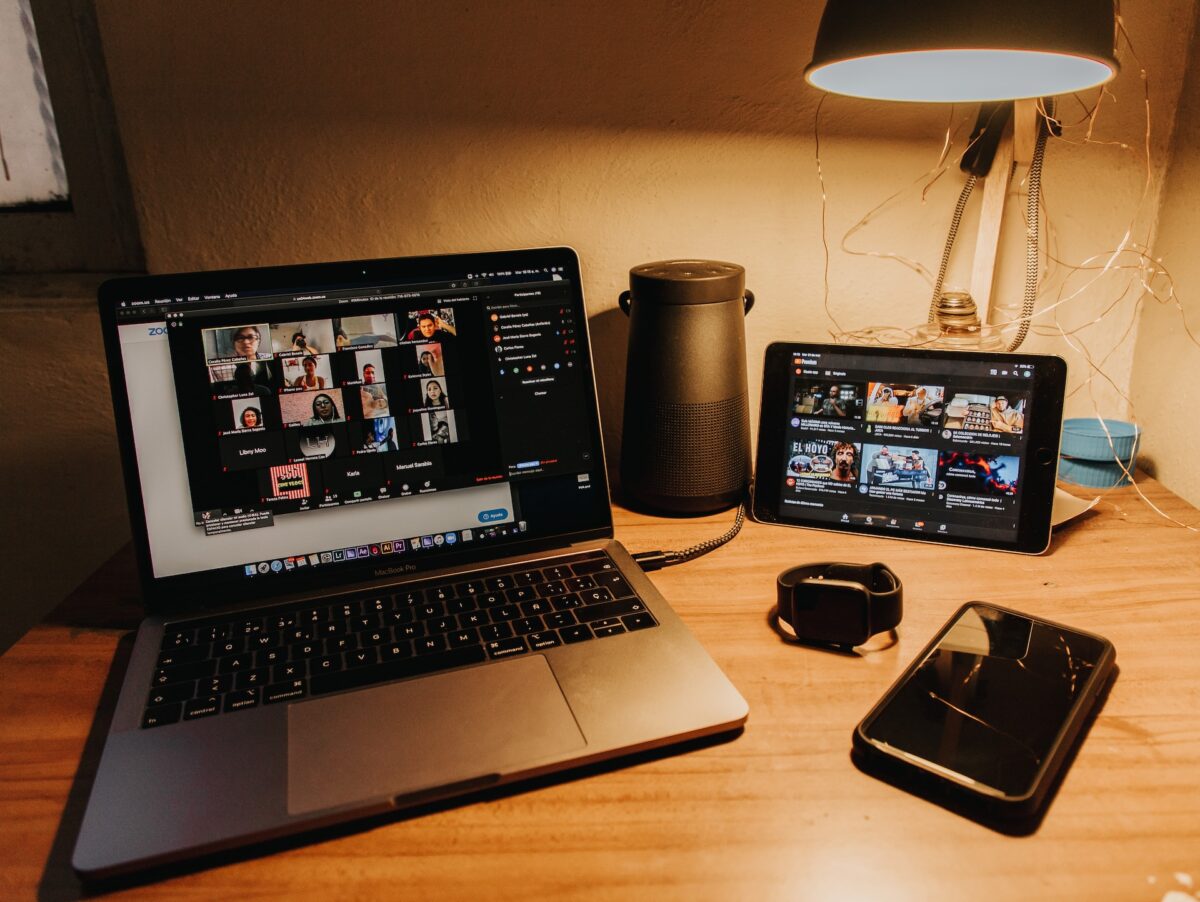Introduction
The world of business is constantly evolving, and entrepreneurs must keep up with the changing trends and technologies to stay ahead of the curve. One of the latest trends in business marketing is podcasting. With the rise of digital media, podcasts have become an effective way for businesses to connect with their audience, build brand awareness, and establish thought leadership.
In this articles, we will guide you through the process of launching a successful podcast for your business.
Whether you’re a seasoned entrepreneur or just starting out, we will help you understand the benefits of podcasting, how to choose the right format, equipment, and software, and how to craft engaging content that will resonate with your target audience.
We will also cover the marketing strategies and techniques you can use to promote your podcast, build your audience, and monetize your content. From overcoming common podcasting challenges to navigating legal and ethical considerations, this book is your comprehensive guide to launching a successful business podcast.
Podcasting has become an increasingly popular medium for businesses to connect with their audience. It offers a unique opportunity to build brand awareness, establish thought leadership, and provide valuable insights to listeners.
Here are a few benefits of creating a business podcast:
- Increased brand exposure and credibility
- Access to a wider audience
- Opportunities to collaborate with other industry leaders
- Ability to provide valuable content to listeners
- Improved customer loyalty and engagement
Choosing the right podcast format that fits your brand is crucial:
When it comes to creating a podcast, choosing the right format is crucial. It should align with your brand’s messaging and audience preferences. Here are some popular podcast formats to consider:
- Interview-style: This involves inviting guests to discuss topics relevant to your brand or industry.
- Solo show: This format involves a single host sharing insights, tips, or stories related to your brand.
- Roundtable discussion: This format involves a group of experts or industry leaders discussing a topic related to your brand.
- Storytelling: This format involves telling stories related to your brand or industry.
Identifying your target audience and content niche:
To create a successful podcast, you need to know your audience and what content will interest them. Here are some questions to help you identify your target audience and content niche:
- Who is your ideal listener?
- What are their pain points or challenges?
- What topics are they interested in?
- What type of content resonates with them?
- What sets your podcast apart from others in your industry?
Creating a compelling podcast title:
Your podcast brand and title should reflect your brand’s values and messaging. Here are some tips for creating a compelling podcast brand and title:
- Choose a name that is memorable, easy to pronounce, and relevant to your brand.
- Create a professional logo and cover art that aligns with your brand’s aesthetics.
- Write a clear and concise description that highlights the value your podcast provides.
Choose the right equipment and software:
Investing in the right equipment and software can help ensure your podcast has high-quality audio and is easy to produce. Here are some essentials you’ll need:
- Microphone: Choose a quality microphone to ensure clear and crisp audio.
- Recording software: There are many options available, such as Audacity or Adobe Audition.
- Editing software: Use editing software to remove unwanted background noise, add sound effects, or adjust levels.
Craft engaging podcast scripts and show outlines:
Creating engaging podcast scripts and show outlines is essential to keeping your audience interested and engaged. Here are some tips for crafting compelling content:
- Create an outline that follows a clear structure.
- Keep your script conversational and natural.
- Use storytelling techniques to keep your audience interested.
- Use humor and anecdotes to add personality to your podcast.
The importance of recording and editing your podcast:
Once you have your equipment and content ready, it’s time to start recording and editing your podcast. Here are some tips to help you produce high-quality audio:
- Choose a quiet and comfortable recording space.
- Record several takes to ensure you have clean audio.
- Use editing software to remove unwanted background noise and adjust levels.
Adding music and sound effects can go a long way:
Adding music and sound effects can help break up your podcast and add personality to your content. Here are some tips for using music and sound effects in your podcast:
- Choose music that aligns with your brand and podcast theme.
- Use sound effects sparingly and only when relevant.
- Make sure any music or sound effects you use are royalty-free.
Develop the right marketing strategy for your podcast:
After creating an engaging podcast with quality content, you need to develop a marketing strategy to help you reach your target audience. Here are some tips to help you market your podcast effectively:
- Leverage Social Media: Social media platforms like Twitter, Instagram, and Facebook are great for promoting your podcast. Use these platforms to share teasers, behind-the-scenes content, and episode previews. Engage with your audience by responding to their comments and feedback.
- Utilize Email Marketing: Email marketing can be a powerful tool for promoting your podcast. Create a mailing list and send regular updates to your subscribers about new episodes, upcoming guests, and other podcast news.
- Collaborate with Other Podcasters: Partnering with other podcasters in your niche can help you expand your reach. Consider guest hosting on other podcasts or inviting other podcasters to be guests on your show.
Building your podcast audience:
Once you have created quality content and have a marketing strategy in place, it’s time to focus on building your podcast audience. Here are some tips to help you grow your audience:
- Engage with Your Listeners: Building a relationship with your listeners is essential for growing your audience. Respond to their feedback, encourage them to share your podcast with others, and ask for their input on future episodes.
- Optimize for SEO: Optimize your podcast title and description for SEO to help people find your podcast when searching online. Use relevant keywords and include a detailed description of what your podcast is about.
- Cross-Promote on Other Platforms: Cross-promoting your podcast on other platforms, such as social media or YouTube, can help you reach new audiences.
Monetizing your podcast with sponsorships and advertising:
Monetizing your podcast can be a great way to earn income from your hard work. Here are some ways to monetize your podcast:
- Sponsorships: You can earn money by partnering with brands and promoting their products or services on your podcast. Look for companies that align with your values and target audience.
- Advertising: Another way to monetize your podcast is by selling advertising space. You can either sell ad space directly to brands or use an advertising network like Advertisecast.
- Merchandise Sales: Consider selling merchandise related to your podcast, such as t-shirts or mugs, to earn additional revenue.
Leverage your podcast for business growth:
Podcasting can also be a powerful tool for growing your business. Here are some tips to help you leverage your podcast for business growth:
- Build Your Authority: Use your podcast to establish yourself as an authority in your niche. Share valuable insights, interview industry experts, and provide actionable advice to your listeners.
- Network with Industry Leaders: Invite industry leaders to be guests on your podcast. This can help you build valuable connections and establish yourself as a thought leader in your industry.
- Generate Leads: Use your podcast to generate leads for your business. Offer exclusive discounts or promotions to your listeners and include a call-to-action in your episodes.
How to properly measure and analyze your podcast success:
Measuring and analyzing your podcast success is essential for improving your content and growing your audience. Here are some metrics to track:
- Downloads: Track the number of downloads your podcast receives per episode.
- Engagement: Monitor engagement metrics like social media shares, comments, and reviews.
- Revenue: Track your podcast’s revenue from sponsorships, advertising, and merchandise sales.
Overcome common podcasting challenges:
Podcasting can be a rewarding experience, but like any creative endeavor, it can also come with its own set of challenges. Here are some common podcasting challenges and tips on how to overcome them:
- Lack of audience engagement: One of the biggest challenges that podcasters face is getting listeners to engage with their content. To overcome this challenge, make sure to promote your podcast on social media and other relevant platforms. Encourage your listeners to share your podcast with their friends and family, and ask for feedback in your episodes.
- Technical difficulties: Technical difficulties can be frustrating, especially when you’re recording an episode. To avoid technical difficulties, invest in a good quality microphone and headphones. Also, make sure to test your equipment before recording and keep backups of your recordings.
- Consistency: Consistency is key when it comes to podcasting. To overcome this challenge, create a schedule for your podcast and stick to it. This will help you build a loyal audience who knows when to expect new episodes.
- Finding guests: Finding guests to interview on your podcast can be a challenge, especially if you’re just starting out. To overcome this challenge, reach out to people in your network and ask if they would be interested in being a guest on your show. You can also use social media platforms like Twitter and LinkedIn to find potential guests.
- Burnout: Burnout is a common challenge for podcasters who are producing content on a regular basis. To avoid burnout, take breaks when you need them and prioritize self-care. You can also consider bringing on a co-host or hiring a team to help with production.
By being proactive and addressing these common challenges head-on, you can overcome the hurdles that come with podcasting and create a successful show that resonates with your listeners.
For more information visit tylerhayzlett.com



















 y Executive-2nd Edition received BookAuthority’s “Best LinkedIn Books
y Executive-2nd Edition received BookAuthority’s “Best LinkedIn Books